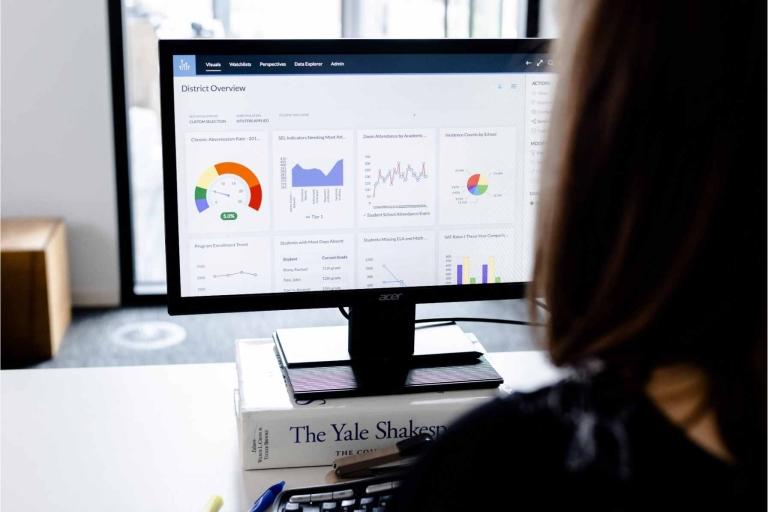At this time last year, we hoped to be on the other side of COVID. Instead, due to the Delta variant, educators are in a state of flux. Cases are on the rise. Students are quarantining. At times, there aren't enough teachers in schools for in-person learning.
Now in the third school year affected by the pandemic, teachers face a whole new type of disruption. They need to be able to continually assess learning, to have a line of sight into what students know and what they do not yet know.
It was challenging enough for teachers to figure out how to transition all of their instruction to a remote environment and creatively assess how much students were learning and retaining. The reality with Delta is that teachers are now battling constant change, with classes or entire schools temporarily shuttering and reopening. Pockets of students are coming in and out of the classroom due to quarantines or sickness. Similarly, teachers or substitutes are often impacted. The result is a perpetual disruption of instruction, affecting different students and educators at different moments continuously.
The past 18 months have been the hardest for our education community in over a century. Before the pandemic, researchers estimated that one out of six American teachers was likely to leave the profession. That has now jumped to one in four, according to the nonprofit RAND Corporation.
Educators who stayed for the 2021/22 school year are entering it playing catch up. In a recent survey by Instructure, half of educators and parents felt students have significantly fallen behind due to COVID-19. The impact of Delta means that teachers suddenly find themselves trying to determine the academic impact of the last school year while simultaneously figuring how to keep students on track amid uncertainty and disruption.
Teachers need the right tools and skills for assessment.
The pandemic reignited the debate around shifting from high-stakes testing to a more balanced assessment approach that's part of the regular instructional cycle. In that same Instructure survey, only 29% of parents and teachers felt high-stakes testing was an important measurement of their learning. Whereas 76% of educators delivered formative assessments or assessments for learning, to check students' understanding during remote learning.
We can't begin to address learning needs without taking the time to assess and understand what students know in a way that will provide teachers with immediate, actionable data to improve student outcomes in real-time. With access to meaningful assessment data, teachers can drive personalized learning plans, determine which students need additional support and which standards need reteaching.
Assessment shouldn't overwhelm teachers or students.
While it's critically important to understand the continuous academic impact of disruptions to teaching and learning, educators must approach assessment thoughtfully. We need to shift our mindset and embrace an actionable approach to formative assessment that's a seamless part of the regular instructional cycle.
At the same time, let's not make teachers learn how to be psychometricians. District leaders should seek effective assessments that teachers can quickly use and benefit from, offering vetted item banks and reliable assessments in easy-to-use formats. That includes proper training and development to build the basic skill set required, with specific tactics for using assessment data to support hybrid learning if necessary.
We also don't want to overwhelm students as they adjust to being back in the classroom. We know students entered the school year with increased anxiety, and assessment is an added stress point. Experts have established a link between stress caused by high-stakes standardized testing and students' performance on those tests, with economically disadvantaged students more negatively impacted.
We don't know what the future will hold as the pandemic continues. However, one thing has become clear: our teachers need us to invest in a reliable way to continuously gauge student learning and progress, no matter where or how that instruction takes place.
Related Content
 inst-3step.jpg
inst-3step.jpgBlogs
 13lmsfeaturesthatbenefitstudentlearning.jpg
13lmsfeaturesthatbenefitstudentlearning.jpgBlogs
 community-homepage.jpg
community-homepage.jpgBlogs

